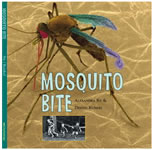 The World of Web 2.0
The World of Web 2.0
Although not everyone agrees on the exact definition, Web 2.0 refers to the second generation of web-based tools and resources (O'Reilly, 2005). This dynamic, retooled environment provides new opportunities for high tech learning. Some of the characteristics of this new online world include:
- A shift from single computers to interoperability and multiple device connections
- A shift from static web pages to dynamically-generated online resources
- A shift from closed systems to open systems and software
- A shift from one time publishing to ongoing content creation and participation by end users
- A shift from single authors to collaborative writing and consensus building
- A shift from data storage such as photo sharing to social networking and commenting
- A shift from "stickiness" (people come to your website) to syndication (you send info to the people)
- A shift from taxonomies (standard-based organization) to folksonomies (user-based organization)
Web 1.0 to 2.0
Technology has played a role in teaching and learning for many years. For example, you might start by reading the book Mosquito Bite by Alexandra Siy and Dennis Kunkel. Students might then use a digital camera and software such as PowerPoint or Word to write their own story. In the last decade, the web has played an increasing role in technology-rich learning. Students might access online images of microscopic worlds and combine them with their own photographs. Some examples include:
- Dennis Kunkel Microscopy - Education
- Most Wanted Bugs
- Molecular Expressions
- Scanning Electronic Microscopy
 The introduction of Web 2.0 technology allows students to reach beyond the classroom. For example, they might take their own microscopic photographs and submit them to the Small World Photography contest. Search for bugs and get help with identifying bugs at BugGuide. Or, create a blog like Micro Images Blog that allows students to comment on the work of others. Smithsonian Encyclopedia of Life is a collaborative project by the US National Museum of Natural History to document the earth's diversity by scientists and citizens of Earth described by E.O. Wilson in The Creation. A related project is Consortium for the Barcode of Life. Check out the Barcode Blog.
The introduction of Web 2.0 technology allows students to reach beyond the classroom. For example, they might take their own microscopic photographs and submit them to the Small World Photography contest. Search for bugs and get help with identifying bugs at BugGuide. Or, create a blog like Micro Images Blog that allows students to comment on the work of others. Smithsonian Encyclopedia of Life is a collaborative project by the US National Museum of Natural History to document the earth's diversity by scientists and citizens of Earth described by E.O. Wilson in The Creation. A related project is Consortium for the Barcode of Life. Check out the Barcode Blog.
Explore
Explore some examples that represent the diverse offerings of Web 2.0.
- Analyze your music preferences. Use Pandora.
- Organize and share your book and media collection. Use LibraryThing.
- Explore the global implications of Web 2.0. Use EOL.
- Become involved in a content-specific example of Web 2.0. Use BugGuide.
- Explore and organize your favorite recipes. Use AllRecipes.
- Want more ideas? Check out the Web 2.0 Award Winners.
Let's use a Web 2.0 application to record our thoughts about this new technology. Google has a number of Web 2.0 applications. Let's try Google Notebook. Also, consider Google Docs and the resources at Google Labs.
Explore each of the examples provided then record your thoughts in Google Notebook.
- Do these environments contain the characteristics of Web 2.0?
-
What do these websites have in common?
-
What features make them different from traditional websites?
- What applications can you see in teaching and learning?
Web 2.0 Lingo
Folksonomy - The use of tagging to catalog and classify web data in an online community. Unlike taxonomies like Sears Subject Headings that use a set list of terms, folksonomies allow individuals to invent their own key terms. Example: A teacher might label a novel "skinny" because she knows that kids seeking a short book might be attracted to this novel.
Mashup.The mixing or two or more web functions to create a more powerful application. Example: When you mix a map website with a photo website you get to see images from specific locations.

